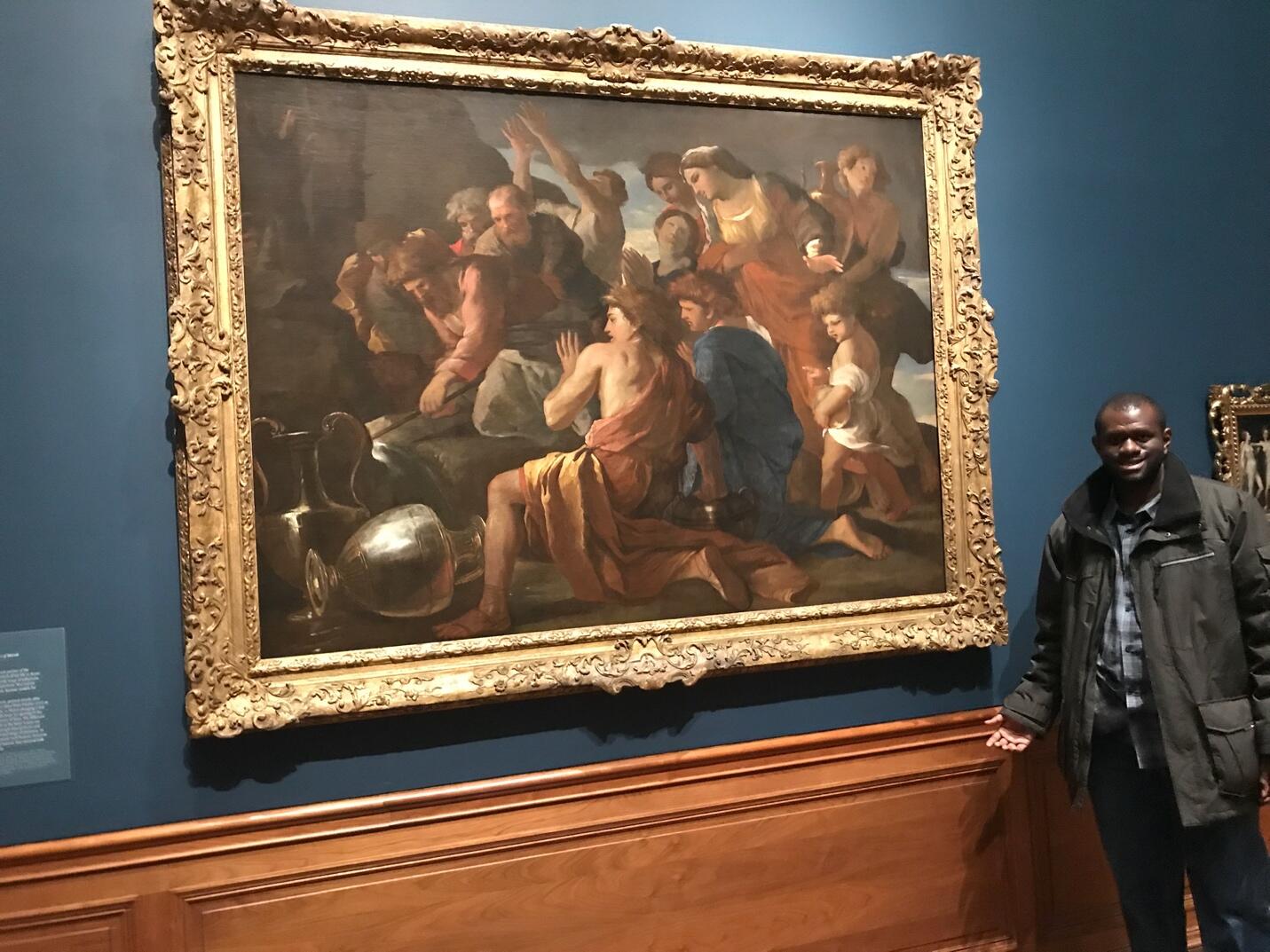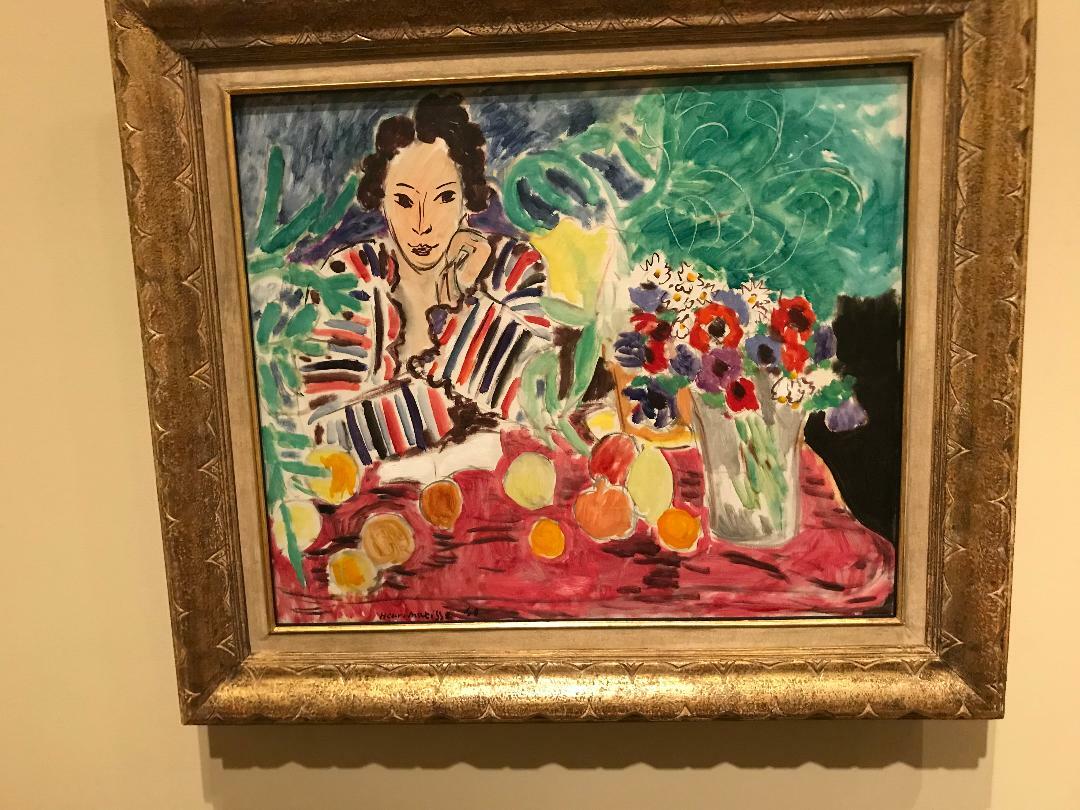The experience of visiting a museum is often compared to contemplation as visitors reflect on what they see and try to make inferences regarding the various types of art. As mentioned by Duncan and Wallach (1840), museums hold the same artistic and historical value as churches, shrines, and even palaces because of their ideological function. They display essential pieces of art as if they are trophies that have been donated to the public by wealthy benefactors.
Besides, museums show the historical development of art and its transformation over centuries. Thus, this exploration will focus on discussing how modern art (1860-1960) is displayed differently from non-modern artwork (before 1860) in the context of the Baltimore Museum of Art. For comparison, it was chosen to include two artworks from different historical periods, the modern piece by Henri Matisse and the non-modern painting by Nicolas Poussin.
The artwork by Nicolas Poussin is named “Moses Sweetening the Waters of Marah,” dated 1627-28. As evidenced by the name of the painting, the oil on canvas artwork depicts a Biblical scene (see Figure 1). The French Classical style, or otherwise known as Baroque, is evident even at first glance at the painting because of the adherence to the standard rules of proportion. In addition, the artwork is characterized by the high drama of the figures’ postures, the use of deep and vibrant colors, and the intensity of light and dark shadows. Adorned in the Baroque-style gold frame, the painting is a certain representation of the classic view on art.

To contrast against the traditionalist perspective on art held by Poussin, it was chosen to explore the oil on canvas painting by Henri Matisse called “Striped Robe, Fruit, and Anemones” dated 1940 (1000 Museums, n.d.). Having multiple inspirations, from Van Gogh to Rodin, Matisse’s art heavily relies on the use of the mixing of bright colors that create a sense of movement to the eye. In the painting, one can see a woman sitting behind the table, on which some fruit is scattered. A large vase of anemone flowers is also placed on the table. However, while all elements of the painting are discernable, Matisse’s style of painting creates movement on canvas, with the limits getting blurred.
The painting is framed in a gold frame; however, its style is much more simplistic and understated if compared to how Poussin’s artwork is presented (see Figure 2). This shows a contrast not only between the styles of paintings and their overall moods but also denotes a change in the way of their presentation. The baroque style of a painting calls for a frame that would be complementary and attract attention to the subject matter of the painting. When an artwork is bright and loud, additional adornments may not be necessary, as evidenced by the example of Matisse’s piece.

Walking through a museum, one cannot help but not notice the gradual shift in the styles of painting or sculpture. The current exploration has shown that how artworks of different styles are presented is closely connected to the subject matter, the color palette, and the overall tone. Therefore, the loud and chaotic portrait by Matisse does not require much adornment while the Classical imagery of a Biblical scene depicted by Poussin requires the same level of pompousness inherent to the Baroque style.
References
Duncan, C., & Wallach, A. (1980). The universal survey museum. Art History, 3, 448-469.
1000 Museums. (n.d.). Striped robe, fruit, and anemones. Web.